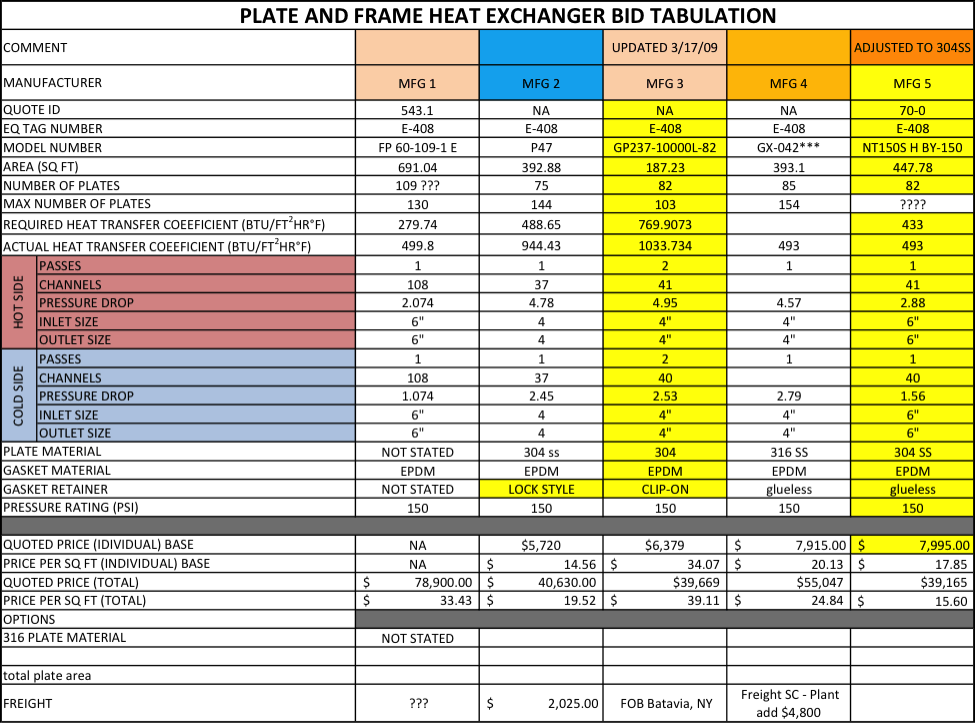The Project Engineer’s Guide To Facility Systems Design & Installation | Section 4
Comparing Bids & Choosing a Proposal

Once proposals are received from the various suppliers, a comparison must be made to identify strengths and weaknesses in each vendor’s offering.
Vendor comparison can be a tedious process, but it’s the key to making the correct technical and financial decision.
Technical Evaluation (Technical Bid Tabulation)
In order to make a true “apples to apples” comparison, it’s necessary to evaluate each pertinent variable between the various suppliers. Some pertinent variables are those related to size, capacity, material of construction, shipping weight, etc.
Different types of equipment will require the evaluation of different specifics relative to their type, but in general should capture each of the specifics that we included in the basic unit specification discussed previously. Any new specifics featured in the various proposals should also be included.
The following is an example of a bid tabulation for plate and frame heat exchangers:

Once the initial bid tabulation is prepared, there will invariably be pieces of data missing from one or more of the vendor proposals. In addition, it’s common for one of the bidders to provide more information than requested, giving you additional insight into the quality of the unit proposed.
Commercial Evaluation (Commercial Bid Tabulation)
In addition to the Technical Bid Tabulation, it’s also necessary to prepare a Commercial Bid Tabulation (price and terms).
These are frequently combined into one spreadsheet, depending on the buyer’s preference. The same principle applies, however; be as detailed as possible so the proper information is available to make the best-informed decision.
Between the Technical Bid Tabulation and the Commercial Bid Tabulation, it’s a good idea to identify “value indicators.” These indicators will vary across different types of equipment, but they are generally metrics such as cost per square foot $/sq ft (as in the above example).
For tanks it may be cost per gallon $/gal, for an evaporator it may be cost per unit of evaporation rate $/# per hour, for heavy rotating equipment it might be cost per pounds of shipping weight $/#. Also unit cost of Horsepower/lb processed.
These value indicators can demonstrate that although a vendor’s price might not be the lowest, they may have more capacity or better “value,” which can be purchased for a slightly incremental cost.
In the example Plate and Frame Heat Exchanger Bid Tabulation above this, the concept of value indicator can be seen in the Price per Square Foot rows near the bottom.
Request Clarifications (Second Round of Proposals)
Once the first-round of Bid Tabulations are complete, a trend will generally appear where one bidder has better metrics and often a better price than the others. If there are many bidders (typically 4 or more), there might be some drastically high prices and drastically low prices.
It’s best to ignore the prices until it’s confirmed that the minimum performance requirements are met.
You’re likely to request clarification from each bidder to fill in gaps in the tabulation, and/or to have certain vendors adjust their proposal so they meet the minimum requirements.
Make the Decision
Once the clarifications are received and the tabulations are updated, a winner typically emerges on its own. The winner may not be the vendor with the lowest price, depending on the performance data, but should be the best performer with good value indicators, and a reasonable price.
